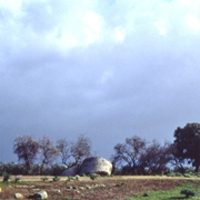
Sacredness and the nature of places
International Landscape Study Days
2006, third seminar
3rd-4th February 2005
The premise underlying this year’s colloquium is that what we think of as sacred – something totally separate, radically “other”, incommensurable-mysterious-awe-inspiring-astounding-compelling – can also be expressed through the form and life of a place and may communicate in many different but recognisable idioms, signs and meanings.
One of these modes of communication could be described as the effect of quantities – the “pathos of distances”, mind-boggling measurements and geometrical relationships, proportions and scales, orography and trigonometry, conterminations and radiations (towards adjacent but already different places) – in short, all the connotations of a place that allow themselves to be described.
Another is the power of history – the dense fabric of natural and historical heritage built up over eternities of geology and biological evolution and during the long period of man’s creative existence, from the layered accumulation of change embodied and visible in the place itself and from the shifts of ideas and oscillations of judgement that affect our view and interpretation of it over time.
Yet another, which is completely independent of artifice or alteration, is charismatic energy – the aura, the distinctive tension created by the specific thoughts, rituals and gestures that have gathered around the place and confer upon it the status of the ineffable.
But inasmuch as such signs and meaning are knowable (and recognizable) they must be considered as part of the catalogue of the physical features of a place, those that, even during the inevitable process of inexorable transformation, define its authenticity and connote its identity; it therefore follows that we have a responsibility to pass them on, still knowable (and recognizable) and along with the associated sciences, arts and practical skills, to those who will come after us.
Exploration of these issues involves purposeful dialogue between widely differing points of view (and capacities for belief) expressed by historians, geographers, anthropologists and experts in places, ideas and religions.
